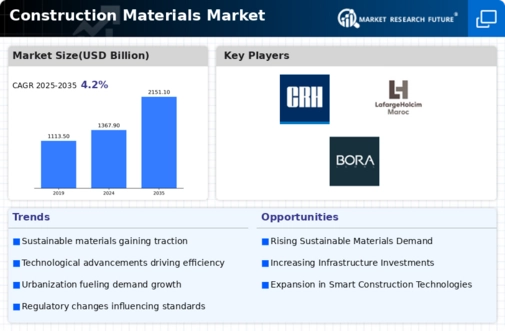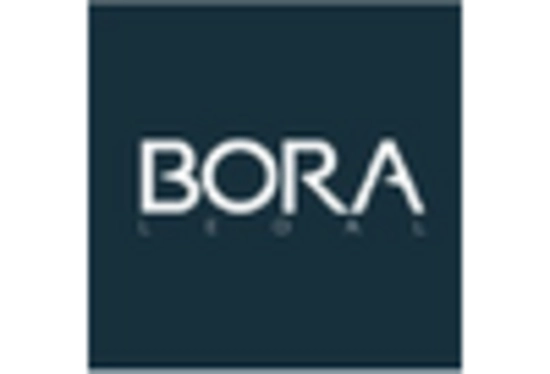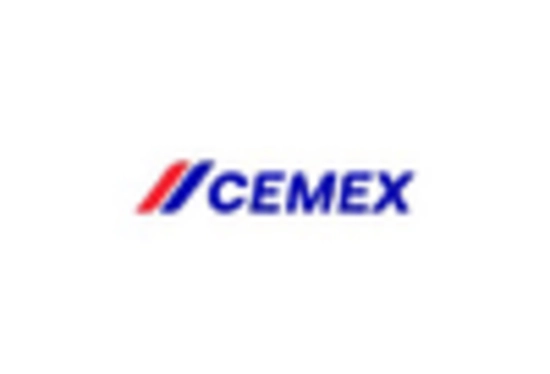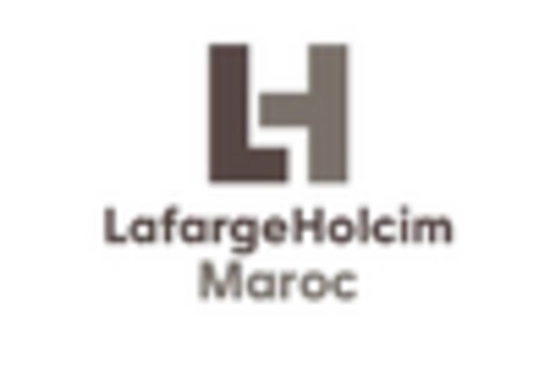-
MARKET DYNAMICS
-
\r\n4.1. Overview
-
\r\n4.2. Drivers
-
\r\n4.3. Restraints
-
\r\n4.4.
-
Opportunities
-
\r\n5. MARKET FACTOR ANALYSIS
-
\r\n5.1. Value Chain Analysis
-
\r\n5.2.
-
Porter’s Five Forces Analysis
-
\r\n5.2.1. Bargaining Power of Suppliers
-
\r\n5.2.2.
-
Bargaining Power of Buyers
-
\r\n5.2.3. Threat of New Entrants
-
\r\n5.2.4.
-
Threat of Substitutes
-
\r\n5.2.5. Intensity of Rivalry
-
\r\n5.3. COVID-19
-
Impact Analysis
-
\r\n5.3.1. Market Impact Analysis
-
\r\n5.3.2. Regional
-
Impact
-
\r\n5.3.3. Opportunity and Threat Analysis
-
\r\n6. GLOBAL CONSTRUCTION
-
MATERIALS MARKET, BY MATERIAL TYPE
-
\r\n6.1. Overview
-
\r\n6.2. Aggregates
-
\r\n6.3.
-
Cement
-
\r\n6.4. Bricks and Blocks
-
\r\n6.5. Metals
-
\r\n6.6. Others
-
\r\n7.
-
GLOBAL CONSTRUCTION MATERIALS MARKET, BY END-USER
-
\r\n7.1. Overview
-
\r\n7.2.
-
Residential
-
\r\n7.3. Infrastructure
-
\r\n7.4. Commercial
-
\r\n7.5.
-
Industrial
-
\r\n8. GLOBAL CONSTRUCTION MATERIALS MARKET, BY REGION
-
\r\n8.1.
-
Overview
-
\r\n8.2. North America
-
\r\n8.2.1. U.S.
-
\r\n8.2.2. Canada
-
\r\n8.3.
-
Europe
-
\r\n8.3.1. Germany
-
\r\n8.3.2. France
-
\r\n8.3.3. U.K
-
\r\n8.3.4.
-
Italy
-
\r\n8.3.5. Spain
-
\r\n8.3.6. Rest of Europe
-
\r\n8.4. Asia-Pacific
-
\r\n8.4.1.
-
China
-
\r\n8.4.2. India
-
\r\n8.4.3. Japan
-
\r\n8.4.4. South Korea
-
\r\n8.4.5.
-
Australia
-
\r\n8.4.6. Rest of Asia-Pacific
-
\r\n8.5. Rest of the World
-
\r\n8.5.1.
-
Middle East
-
\r\n8.5.2. Africa
-
\r\n8.5.3. Latin America
-
\r\n9.
-
COMPETITIVE LANDSCAPE
-
\r\n9.1. Overview
-
\r\n9.2. Competitive Analysis
-
\r\n9.3.
-
Market Share Analysis
-
\r\n9.4. Major Growth Strategy in the Global Construction
-
materials Market,
-
\r\n9.5. Competitive Benchmarking
-
\r\n9.6. Leading
-
Players in Terms of Number of Developments in the Global Construction materials
-
Market,
-
\r\n9.7. Key developments and Growth Strategies
-
\r\n9.7.1. New
-
MATERIAL TYPE Launch/END-USER Deployment
-
\r\n9.7.2. Merger & Acquisitions
-
\r\n9.7.3.
-
Joint Ventures
-
\r\n9.8. Major Players Financial Matrix
-
\r\n9.8.1. Sales
-
& Operating Income, 2022
-
\r\n9.8.2. Major Players R&D Expenditure.
-
\r\n10. COMPANY PROFILES
-
\r\n10.1. China National Building Material
-
Co., Ltd. (China)
-
\r\n10.1.1. Company Overview
-
\r\n10.1.2. Financial
-
Overview
-
\r\n10.1.3. Material Type Offered
-
\r\n10.1.4. Key Developments
-
\r\n10.1.5.
-
SWOT Analysis
-
\r\n10.1.6. Key Strategies
-
\r\n10.2. CRH PLC (Ireland)
-
\r\n10.2.1.
-
Company Overview
-
\r\n10.2.2. Financial Overview
-
\r\n10.2.3. Material
-
Type Offered
-
\r\n10.2.4. Key Developments
-
\r\n10.2.5. SWOT Analysis
-
\r\n10.2.6.
-
Key Strategies
-
\r\n10.3. LafargeHolcim Ltd. (Switzerland)
-
\r\n10.3.1.
-
Company Overview
-
\r\n10.3.2. Financial Overview
-
\r\n10.3.3. Material
-
Type Offered
-
\r\n10.3.4. Key Developments
-
\r\n10.3.5. SWOT Analysis
-
\r\n10.3.6.
-
Key Strategies
-
\r\n10.4. BBMG Corporation Ltd. (China)
-
\r\n10.4.1. Company
-
Overview
-
\r\n10.4.2. Financial Overview
-
\r\n10.4.3. Material Type Offered
-
\r\n10.4.4.
-
Key Developments
-
\r\n10.4.5. SWOT Analysis
-
\r\n10.4.6. Key Strategies
-
\r\n10.5.
-
HeidelbergCement AG (Germany)
-
\r\n10.5.1. Company Overview
-
\r\n10.5.2.
-
Financial Overview
-
\r\n10.5.3. Material Type Offered
-
\r\n10.5.4. Key
-
Developments
-
\r\n10.5.5. SWOT Analysis
-
\r\n10.5.6. Key Strategies
-
\r\n10.6.
-
CEMEX S.A.B. de C.V. (Mexico)
-
\r\n10.6.1. Company Overview
-
\r\n10.6.2.
-
Financial Overview
-
\r\n10.6.3. Material Type Offered
-
\r\n10.6.4. Key
-
Developments
-
\r\n10.6.5. SWOT Analysis
-
\r\n10.6.6. Key Strategies
-
\r\n10.7.
-
Knauf Gips KG (Germany)
-
\r\n10.7.1. Company Overview
-
\r\n10.7.2. Financial
-
Overview
-
\r\n10.7.3. Material Type Offered
-
\r\n10.7.4. Key Developments
-
\r\n10.7.5.
-
SWOT Analysis
-
\r\n10.7.6. Key Strategies
-
\r\n10.8. Lixil Group Corporation
-
(Japan)
-
\r\n10.8.1. Company Overview
-
\r\n10.8.2. Financial Overview
-
\r\n10.8.3.
-
Material Type Offered
-
\r\n10.8.4. Key Developments
-
\r\n10.8.5. SWOT
-
Analysis
-
\r\n10.8.6. Key Strategies
-
\r\n10.9. Anhui Conch Cement Co.,
-
Ltd. (China)
-
\r\n10.9.1. Company Overview
-
\r\n10.9.2. Financial Overview
-
\r\n10.9.3.
-
Material Type Offered
-
\r\n10.9.4. Key Developments
-
\r\n10.9.5. SWOT
-
Analysis
-
\r\n10.9.6. Key Strategies
-
\r\n10.10. Boral Limited (Australia)
-
\r\n10.10.1.
-
Company Overview
-
\r\n10.10.2. Financial Overview
-
\r\n10.10.3. Material
-
Type Offered
-
\r\n10.10.4. Key Developments
-
\r\n10.10.5. SWOT Analysis
-
\r\n10.10.6.
-
Key Strategies
-
\r\n11. APPENDIX
-
\r\n11.1. References
-
\r\n11.2.
-
Related Reports
-
\r\n
-
\r\nLIST OF TABLES
-
\r\nTABLE 1 GLOBAL
-
CONSTRUCTION MATERIALS MARKET, SYNOPSIS, 2025 - 2034
-
\r\nTABLE 2 GLOBAL CONSTRUCTION
-
MATERIALS MARKET, ESTIMATES & FORECAST, 2025 - 2034 (USD BILLION)
-
\r\nTABLE
-
GLOBAL CONSTRUCTION MATERIALS MARKET, BY MATERIAL TYPE, 2025 - 2034 (USD BILLION)
-
\r\nTABLE
-
GLOBAL CONSTRUCTION MATERIALS MARKET, BY END-USER, 2025 - 2034 (USD BILLION)
-
\r\nTABLE
-
NORTH AMERICA CONSTRUCTION MATERIALS MARKET, BY MATERIAL TYPE, 2025 - 2034 (USD
-
BILLION)
-
\r\nTABLE 6 NORTH AMERICA CONSTRUCTION MATERIALS MARKET, BY END-USER,
-
\r\nTABLE 7 NORTH AMERICA CONSTRUCTION MATERIALS
-
MARKET, BY COUNTRY, 2025 - 2034 (USD BILLION)
-
\r\nTABLE 8 U.S. CONSTRUCTION
-
MATERIALS MARKET, BY MATERIAL TYPE, 2025 - 2034 (USD BILLION)
-
\r\nTABLE 9
-
U.S. CONSTRUCTION MATERIALS MARKET, BY END-USER, 2025 - 2034 (USD BILLION)
-
\r\nTABLE
-
CANADA CONSTRUCTION MATERIALS MARKET, BY MATERIAL TYPE, 2025 - 2034 (USD BILLION)
-
\r\nTABLE
-
CANADA CONSTRUCTION MATERIALS MARKET, BY END-USER, 2025 - 2034 (USD BILLION)
-
\r\nTABLE
-
EUROPE CONSTRUCTION MATERIALS MARKET, BY MATERIAL TYPE, 2025 - 2034 (USD BILLION)
-
\r\nTABLE
-
EUROPE CONSTRUCTION MATERIALS MARKET, BY END-USER, 2025 - 2034 (USD BILLION)
-
\r\nTABLE
-
EUROPE CONSTRUCTION MATERIALS MARKET, BY COUNTRY, 2025 - 2034 (USD BILLION)
-
\r\nTABLE
-
GERMANY CONSTRUCTION MATERIALS MARKET, BY MATERIAL TYPE, 2025 - 2034 (USD BILLION)
-
\r\nTABLE
-
GERMANY CONSTRUCTION MATERIALS MARKET, BY END-USER, 2025 - 2034 (USD BILLION)
-
\r\nTABLE
-
FRANCE CONSTRUCTION MATERIALS MARKET, BY MATERIAL TYPE, 2025 - 2034 (USD BILLION)
-
\r\nTABLE
-
FRANCE CONSTRUCTION MATERIALS MARKET, BY END-USER, 2025 - 2034 (USD BILLION)
-
\r\nTABLE
-
ITALY CONSTRUCTION MATERIALS MARKET, BY MATERIAL TYPE, 2025 - 2034 (USD BILLION)
-
\r\nTABLE
-
ITALY CONSTRUCTION MATERIALS MARKET, BY END-USER, 2025 - 2034 (USD BILLION)
-
\r\nTABLE
-
SPAIN CONSTRUCTION MATERIALS MARKET, BY MATERIAL TYPE, 2025 - 2034 (USD BILLION)
-
\r\nTABLE
-
SPAIN CONSTRUCTION MATERIALS MARKET, BY END-USER, 2025 - 2034 (USD BILLION)
-
\r\nTABLE
-
U.K CONSTRUCTION MATERIALS MARKET, BY MATERIAL TYPE, 2025 - 2034 (USD BILLION)
-
\r\nTABLE
-
U.K CONSTRUCTION MATERIALS MARKET, BY END-USER, 2025 - 2034 (USD BILLION)
-
\r\nTABLE
-
REST OF EUROPE CONSTRUCTION MATERIALS MARKET, BY MATERIAL TYPE, 2025 - 2034 (USD
-
BILLION)
-
\r\nTABLE 26 REST OF EUROPE CONSTRUCTION MATERIALS MARKET, BY END-USER,
-
\r\nTABLE 27 ASIA PACIFIC CONSTRUCTION MATERIALS
-
MARKET, BY MATERIAL TYPE, 2025 - 2034 (USD BILLION)
-
\r\nTABLE 28 ASIA PACIFIC
-
CONSTRUCTION MATERIALS MARKET, BY END-USER, 2025 - 2034 (USD BILLION)
-
\r\nTABLE
-
ASIA PACIFIC CONSTRUCTION MATERIALS MARKET, BY COUNTRY, 2025 - 2034 (USD BILLION)
-
\r\nTABLE
-
JAPAN CONSTRUCTION MATERIALS MARKET, BY MATERIAL TYPE, 2025 - 2034 (USD BILLION)
-
\r\nTABLE
-
JAPAN CONSTRUCTION MATERIALS MARKET, BY END-USER, 2025 - 2034 (USD BILLION)
-
\r\nTABLE
-
CHINA CONSTRUCTION MATERIALS MARKET, BY MATERIAL TYPE, 2025 - 2034 (USD BILLION)
-
\r\nTABLE
-
CHINA CONSTRUCTION MATERIALS MARKET, BY END-USER, 2025 - 2034 (USD BILLION)
-
\r\nTABLE
-
INDIA CONSTRUCTION MATERIALS MARKET, BY MATERIAL TYPE, 2025 - 2034 (USD BILLION)
-
\r\nTABLE
-
INDIA CONSTRUCTION MATERIALS MARKET, BY END-USER, 2025 - 2034 (USD BILLION)
-
\r\nTABLE
-
AUSTRALIA CONSTRUCTION MATERIALS MARKET, BY MATERIAL TYPE, 2025 - 2034 (USD BILLION)
-
\r\nTABLE
-
AUSTRALIA CONSTRUCTION MATERIALS MARKET, BY END-USER, 2025 - 2034 (USD BILLION)
-
\r\nTABLE
-
SOUTH KOREA CONSTRUCTION MATERIALS MARKET, BY MATERIAL TYPE, 2025 - 2034 (USD
-
BILLION)
-
\r\nTABLE 39 SOUTH KOREA CONSTRUCTION MATERIALS MARKET, BY END-USER,
-
\r\nTABLE 40 REST OF ASIA-PACIFIC CONSTRUCTION MATERIALS
-
MARKET, BY MATERIAL TYPE, 2025 - 2034 (USD BILLION)
-
\r\nTABLE 41 REST OF ASIA-PACIFIC
-
CONSTRUCTION MATERIALS MARKET, BY END-USER, 2025 - 2034 (USD BILLION)
-
\r\nTABLE
-
REST OF WORLD CONSTRUCTION MATERIALS MARKET, BY MATERIAL TYPE, 2025 - 2034 (USD
-
BILLION)
-
\r\nTABLE 43 REST OF WORLD CONSTRUCTION MATERIALS MARKET, BY END-USER,
-
\r\nTABLE 44 REST OF WORLD CONSTRUCTION MATERIALS
-
MARKET, BY COUNTRY, 2025 - 2034 (USD BILLION)
-
\r\nTABLE 45 MIDDLE EAST CONSTRUCTION
-
MATERIALS MARKET, BY MATERIAL TYPE, 2025 - 2034 (USD BILLION)
-
\r\nTABLE 46
-
MIDDLE EAST CONSTRUCTION MATERIALS MARKET, BY END-USER, 2025 - 2034 (USD BILLION)
-
\r\nTABLE
-
AFRICA CONSTRUCTION MATERIALS MARKET, BY MATERIAL TYPE, 2025 - 2034 (USD BILLION)
-
\r\nTABLE
-
AFRICA CONSTRUCTION MATERIALS MARKET, BY END-USER, 2025 - 2034 (USD BILLION)
-
\r\nTABLE
-
LATIN AMERICA CONSTRUCTION MATERIALS MARKET, BY MATERIAL TYPE, 2025 - 2034 (USD
-
BILLION)
-
\r\nTABLE 50 LATIN AMERICA CONSTRUCTION MATERIALS MARKET, BY END-USER,
-
\r\n
-
\r\nLIST OF FIGURES
-
\r\nFIGURE
-
RESEARCH PROCESS
-
\r\nFIGURE 2 MARKET STRUCTURE FOR THE GLOBAL CONSTRUCTION
-
MATERIALS MARKET
-
\r\nFIGURE 3 MARKET DYNAMICS FOR THE GLOBAL CONSTRUCTION
-
MATERIALS MARKET
-
\r\nFIGURE 4 GLOBAL CONSTRUCTION MATERIALS MARKET, SHARE
-
(%), BY MATERIAL TYPE, 2022
-
\r\nFIGURE 5 GLOBAL CONSTRUCTION MATERIALS MARKET,
-
SHARE (%), BY END-USER, 2022
-
\r\nFIGURE 6 GLOBAL CONSTRUCTION MATERIALS MARKET,
-
SHARE (%), BY REGION, 2022
-
\r\nFIGURE 7 NORTH AMERICA: CONSTRUCTION MATERIALS
-
MARKET, SHARE (%), BY REGION, 2022
-
\r\nFIGURE 8 EUROPE: CONSTRUCTION MATERIALS
-
MARKET, SHARE (%), BY REGION, 2022
-
\r\nFIGURE 9 ASIA-PACIFIC: CONSTRUCTION
-
MATERIALS MARKET, SHARE (%), BY REGION, 2022
-
\r\nFIGURE 10 REST OF THE WORLD:
-
CONSTRUCTION MATERIALS MARKET, SHARE (%), BY REGION, 2022
-
\r\nFIGURE 11 GLOBAL
-
CONSTRUCTION MATERIALS MARKET: COMPANY SHARE ANALYSIS, 2022 (%)
-
\r\nFIGURE
-
CHINA NATIONAL BUILDING MATERIAL CO., LTD. (CHINA): FINANCIAL OVERVIEW SNAPSHOT
-
\r\nFIGURE
-
CHINA NATIONAL BUILDING MATERIAL CO., LTD. (CHINA): SWOT ANALYSIS
-
\r\nFIGURE
-
CRH PLC (IRELAND): FINANCIAL OVERVIEW SNAPSHOT
-
\r\nFIGURE 15 CRH PLC (IRELAND):
-
SWOT ANALYSIS
-
\r\nFIGURE 16 LAFARGEHOLCIM LTD. (SWITZERLAND): FINANCIAL OVERVIEW
-
SNAPSHOT
-
\r\nFIGURE 17 LAFARGEHOLCIM LTD. (SWITZERLAND): SWOT ANALYSIS
-
\r\nFIGURE
-
BBMG CORPORATION LTD. (CHINA): FINANCIAL OVERVIEW SNAPSHOT
-
\r\nFIGURE 19
-
BBMG CORPORATION LTD. (CHINA): SWOT ANALYSIS
-
\r\nFIGURE 20 HEIDELBERGCEMENT
-
AG (GERMANY).: FINANCIAL OVERVIEW SNAPSHOT
-
\r\nFIGURE 21 HEIDELBERGCEMENT
-
AG (GERMANY).: SWOT ANALYSIS
-
\r\nFIGURE 22 CEMEX S.A.B. DE C.V. (MEXICO):
-
FINANCIAL OVERVIEW SNAPSHOT
-
\r\nFIGURE 23 CEMEX S.A.B. DE C.V. (MEXICO): SWOT
-
ANALYSIS
-
\r\nFIGURE 24 KNAUF GIPS KG (GERMANY): FINANCIAL OVERVIEW SNAPSHOT
-
\r\nFIGURE
-
KNAUF GIPS KG (GERMANY): SWOT ANALYSIS
-
\r\nFIGURE 26 LIXIL GROUP CORPORATION
-
(JAPAN): FINANCIAL OVERVIEW SNAPSHOT
-
\r\nFIGURE 27 LIXIL GROUP CORPORATION
-
(JAPAN): SWOT ANALYSIS
-
\r\nFIGURE 28 ANHUI CONCH CEMENT CO., LTD. (CHINA):
-
FINANCIAL OVERVIEW SNAPSHOT
-
\r\nFIGURE 29 ANHUI CONCH CEMENT CO., LTD. (CHINA):
-
SWOT ANALYSIS
-
\r\nFIGURE 30 BORAL LIMITED (AUSTRALIA): FINANCIAL OVERVIEW
-
SNAPSHOT
-
\r\nFIGURE 31 BORAL LIMITED (AUSTRALIA): SWOT ANALYSIS









Leave a Comment